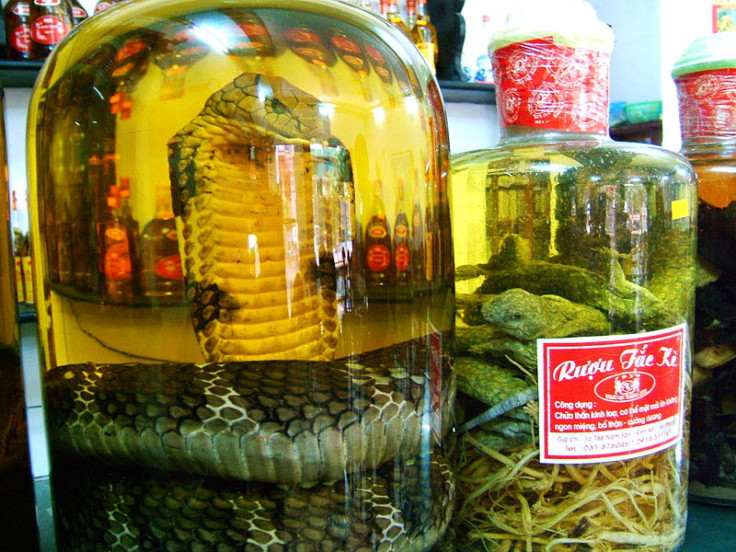Wine Snake Bites Woman After Spending 3 Months In The Bottle

It's the Year of the Snake on the Chinese zodiac, and one reptile wanted to celebrate.
On September 3, the snake in question jumped out of a bottle of medicinal wine where it had been fermenting for three months and bit a woman’s hand, the Global Times reports.
The woman named Liu from Shuangcheng in Heilongjiang Province decided to add more alcohol to a bottle of snake wine – considered a powerful medicine in traditional Chinese medicine – used to treat her rheumatism.
“Before the shejiu (snake wine) could have any effect on me, I was sent to the hospital for a snake bite,” Liu said.
The woman reportedly made the snake wine after a friend suggested it would help her joint pain. The snake, believed to be a viper, was pickled for three months. Whenever the woman needed a swig, she would pour a small shot of the wine from a spigot located at the bottom of the bottle, Yahoo Japan reports.
When the bottle was empty, Liu decided to refill it with more alcohol. When she opened the lid, the snake started to breath, then wriggled and sprang out, biting her finger.
Liu was hospitalized for inflammation from the bite but is otherwise doing fine. The snake’s condition was not specified.
This wasn’t the first time a snake survived in snake wine. In 2009 a snake that had been preserved for two months bit a Chinese villager. In 2001, a snake killed a villager in the Guangxi Zhuang Autonomous Region.
Snake wine, also known as “medicinal” rice wine has dead cobras inside. It is typically made with leftover brandy and Perrier. U.S. Customs and Border Protection officials that have seized the unusual concoction at airports say the snake is submerged in alcohol often with other insects and animals like turtles. The snakes are preserved for their venom, which dissolves in the alcohol and is believed to have medicine properties.
Instances of snakes surviving months in alcohol may stem from their ability to hibernate. By lowering their metabolism and heart rate, they can stay alive as long as the bottle is not airtight.
© Copyright IBTimes 2025. All rights reserved.




















